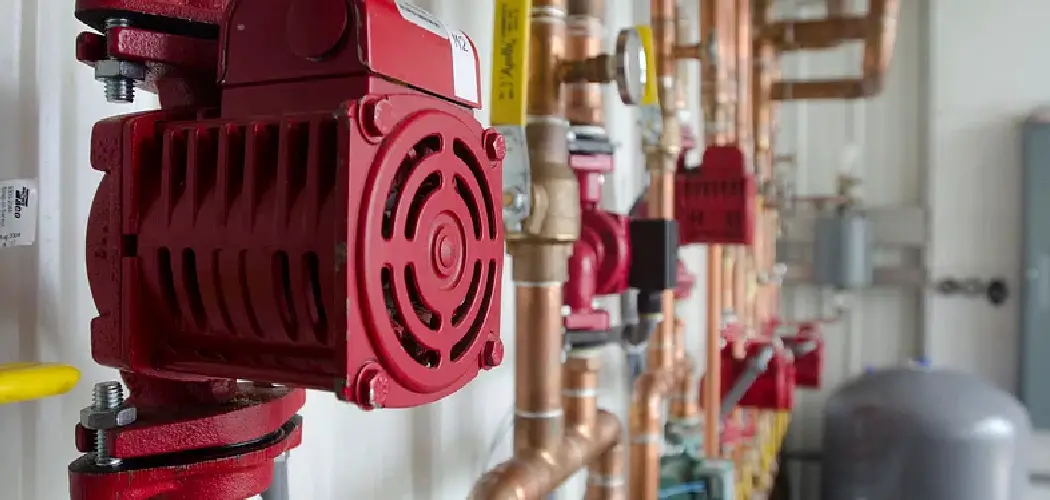As the warmer months approach, it’s essential to transition your home from heating to cooling efficiently. One critical step in this process is turning off your gas furnace for the summer. Shutting down your gas furnace not only helps in conserving energy but also extends the lifespan of the appliance by preventing unnecessary wear and tear. Properly turning off the furnace involves more than just switching it off; it requires a few simple yet important steps to ensure safety and efficiency.
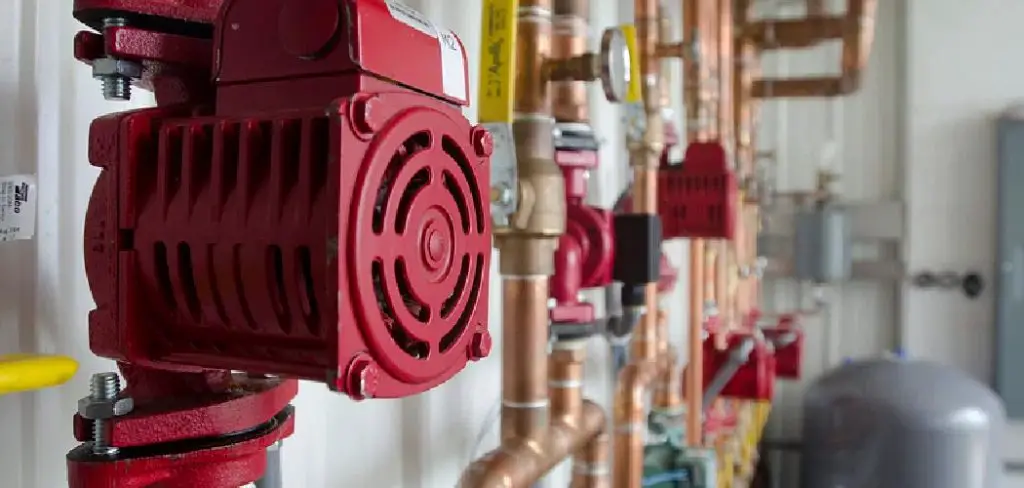
By following a systematic approach of how to turn off gas furnace for summer, homeowners can effectively shut down their gas furnaces, reducing energy consumption and preparing their HVAC system for the cooling season. This process typically includes turning off the furnace’s pilot light, cutting off the gas supply, and conducting a thorough inspection to ensure there are no lingering issues. Understanding these steps will help you maintain your furnace in good condition, ensuring it’s ready to resume operation when the temperatures drop again.
Importance of Properly Shutting Down
Properly shutting down your gas furnace for the summer is crucial for several reasons. Firstly, it significantly conserves energy, which can lead to lower utility bills. An idle furnace can still use a small amount of energy if not properly turned off, contributing to unnecessary costs. Secondly, turning off the gas supply prevents potential safety hazards such as gas leaks, which can pose serious risks to your home and family.
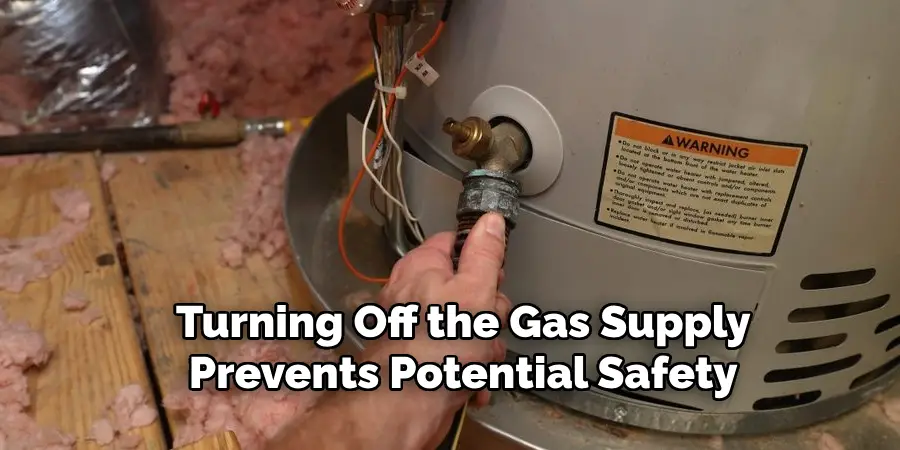
Additionally, by shutting down the furnace properly, you reduce the risk of dust and debris accumulating within the system, which can hinder performance and cause maintenance issues down the line. Lastly, a well-maintained and properly shut down furnace will encounter fewer problems when it’s time to restart, ensuring efficient and reliable operation when the colder months return. Taking the time to follow the correct procedure protects your investment and provides peace of mind throughout the summer season.
Potential Risks of Leaving a Gas Furnace On
Leaving your gas furnace on during the summer can lead to several potential risks that could affect both your household and the furnace itself. One of the primary concerns is the increased likelihood of gas leaks. Even a minor leak can be hazardous, posing risks of fire or carbon monoxide poisoning, both of which are serious threats to the safety of your family. Another risk involves the unnecessary wear and tear on the furnace components. When the furnace remains active, even in an idle state, parts like the pilot light and gas valves are continually in use, leading to premature deterioration and the potential for costly repairs or replacements.
Additionally, keeping the furnace operational can result in higher energy consumption, thus inflated utility bills, as the system may turn on during cooler summer nights. Lastly, an operational furnace can attract and accumulate dirt, dust, and other debris that may clog filters and decrease efficiency, making it harder for your HVAC system to switch back to heating mode come winter. These factors collectively underscore the importance of properly shutting down your gas furnace during warmer months to ensure safety, efficiency, and longevity.
Understanding Your Gas Furnace
To effectively shut down your gas furnace for the summer, it’s important to have a basic understanding of how your gas furnace operates. A gas furnace uses a burner to combust natural gas or propane, creating heat that is transferred to the air through a heat exchanger.
This heated air is then distributed throughout your home via a network of ducts. Key components of your gas furnace include the thermostat, which regulates temperature; the gas valve, which controls the flow of gas to the burner; the pilot light or electronic ignition system, which ignites the gas; and the blower motor, which circulates the heated air.

Knowing the function of these components can help you troubleshoot any issues that might arise during the shutdown process and perform routine maintenance more effectively. Additionally, understanding the operation of your furnace ensures that you follow the correct procedures for shutting it down, thus safeguarding your home and extending the lifespan of your HVAC system.
Components of a Gas Furnace
Understanding the different components of a gas furnace is key to ensuring its proper operation and maintenance. Here are some of the main parts:
- Thermostat: The thermostat acts as the control center for your furnace, regulating the temperature and ensuring that the system turns on or off as needed to maintain the desired indoor climate.
- Burner: This is where the combustion of natural gas or propane occurs. The burner creates the heat that warms your home.
- Heat Exchanger: The heat exchanger transfers the heat generated by the burner to the air without mixing combustion gases with the indoor air. It plays a critical role in the efficiency and safety of the furnace.
- Blower Motor: The blower motor is responsible for distributing the heated air throughout your home via the duct system. It pushes the air across the heat exchanger and into the supply ducts.
- Gas Valve: The gas valve regulates the flow of gas to the burner. It ensures a controlled supply of gas for combustion, which is essential for safe and efficient operation.
- Pilot Light/Electronic Ignition: Older furnaces use a pilot light to ignite the gas, whereas newer models often use an electronic ignition system. This component is crucial for starting the combustion process.
- Flue/Exhaust: The flue system vents out the byproducts of combustion, such as carbon monoxide, from your home. Proper ventilation is crucial for safety.
- Filter: The air filter traps dust, dirt, and other particles to prevent them from entering the furnace and spreading throughout your home. Regular filter changes are essential for maintaining furnace efficiency and air quality.
- Limit Switch: This safety device monitors the furnace’s internal temperature and turns off the burner if it gets too hot, preventing overheating and potential damage.
- Ductwork: The network of ducts that transport heated air from the furnace to various rooms in your home and return cooler air back to the furnace for reheating.
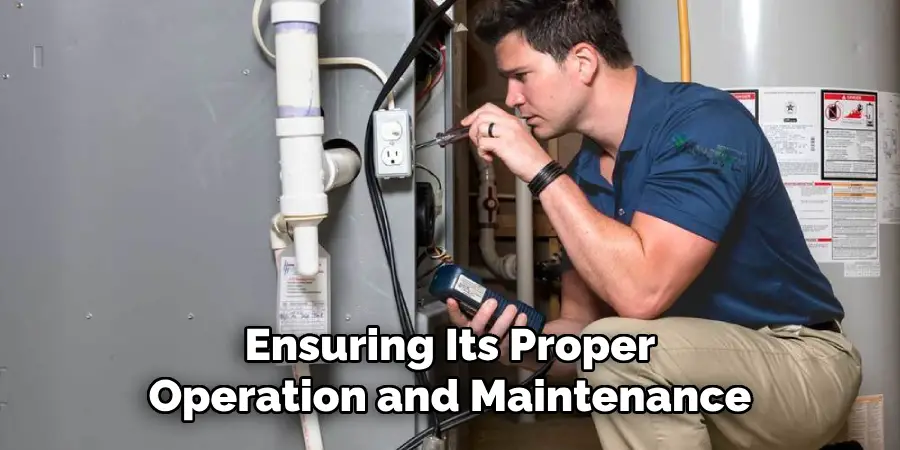
Knowing these components and their functions can help you better understand how your gas furnace works, making it easier to perform routine checks, troubleshooting, and maintenance tasks. This knowledge is particularly useful when preparing to shut down your furnace for the summer, ensuring you follow the correct procedures for a safe and efficient transition.
Functionality of a Gas Furnace During Different Seasons
Understanding the functionality of your gas furnace during different seasons ensures optimal performance and energy efficiency throughout the year. During the winter months, your gas furnace operates at its peak, providing the necessary heat to maintain a comfortable indoor environment. The thermostat detects the temperature drop and signals the furnace to ignite the burner. The blower motor then circulates the heated air through the ductwork to warm up your living spaces. Regular maintenance during this period is crucial to prevent breakdowns and ensure efficient operation.
In contrast, the summer season requires a different approach to furnace management. Since heating needs are minimal, it’s advisable to shut down the gas furnace to conserve energy and reduce wear and tear on the components. This involves turning off the gas valve, extinguishing the pilot light (or disabling the electronic ignition system), and performing a thorough cleaning to remove accumulated debris. By properly shutting down the furnace, you help prevent accidental gas leaks and ensure that the system is in good condition when it’s needed again.
During transitional seasons like spring and fall, your furnace may be used intermittently. It’s important to monitor its performance and make necessary adjustments to the thermostat settings. These periods are ideal for scheduling routine maintenance checks to address any potential issues before they escalate, ensuring your furnace is ready for the demands of the coming winter.
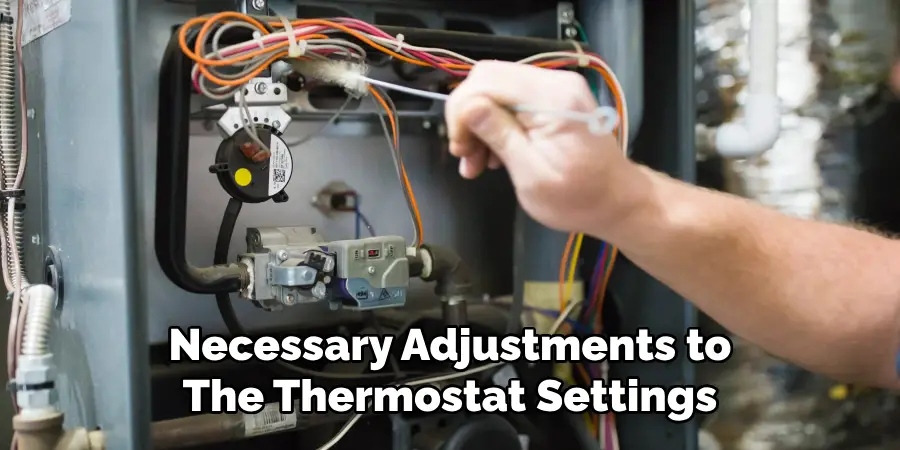
By understanding the functionality of your gas furnace across different seasons, you can maintain a comfortable indoor climate year-round while safeguarding the longevity and efficiency of your HVAC system.
10 Methods How to Turn off Gas Furnace for Summer
1. Switch Off the Thermostat
The first step in turning off your gas furnace for the summer is to switch off the thermostat. The thermostat controls the activation of your furnace, so turning it off ensures that the furnace will not be accidentally triggered on during the warmer months. To do this, set your thermostat to the “off” position or switch it to “cool” if your thermostat also controls your air conditioning system. This simple action prevents the furnace from operating unnecessarily and saves energy.
2. Shut Down the Pilot Light
For older gas furnaces that utilize a standing pilot light, shutting down the pilot light is a crucial step. The pilot light continuously burns a small amount of gas, even when the furnace is not in use, which can be wasteful over the summer. To extinguish the pilot light, locate the gas valve control, typically found near the bottom of the furnace. Turn the valve to the “off” position. This will stop the flow of gas to the pilot light, extinguishing the flame. For added safety, you can also close the manual gas shutoff valve near the furnace. This ensures no gas flows to the furnace while it is not in use.
3. Perform a Thorough Cleaning
Before shutting down your furnace for the summer, it’s an excellent opportunity to perform a thorough cleaning. Dust and debris can accumulate in and around the furnace during its operational months. Start by turning off the power to the furnace to ensure safety. Clean the exterior and interior components, including the burners, blower motor, and vents. Vacuum the area around the furnace and replace or clean the air filters. This not only helps maintain the efficiency of the furnace but also prepares it for a smooth restart in the fall.
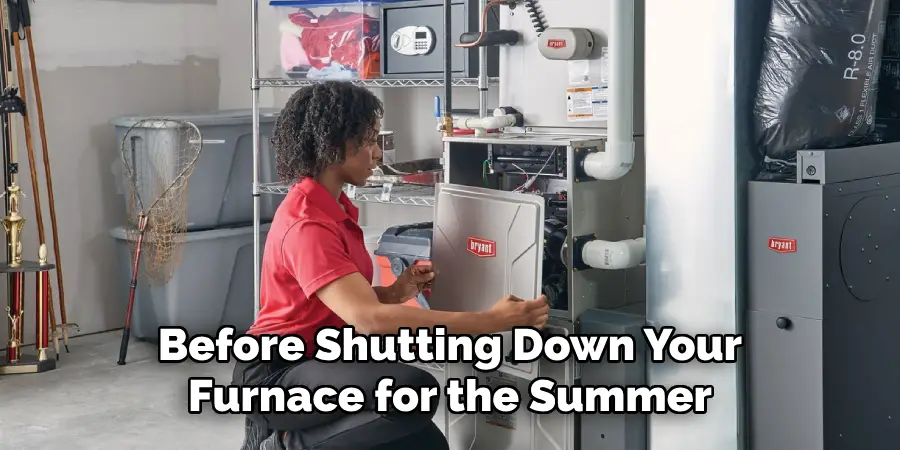
4. Inspect the Furnace for Damage
While preparing your furnace for its summer shutdown, take the time to inspect it for any signs of damage or wear. Look for cracks, rust, or any other visible issues with the furnace components. Check the condition of the wiring and ensure there are no loose connections.
If you notice any problems, it’s advisable to schedule a professional inspection and repair before shutting down the furnace. Addressing these issues now can prevent more significant problems when you restart the furnace in the fall. While inspecting the furnace, it’s also a good idea to clean or replace the air filters. This will improve the overall efficiency and lifespan of your furnace.
5. Close the Gas Supply Valve
Closing the gas supply valve is a critical step in shutting down your gas furnace for the summer. This valve controls the flow of natural gas to your furnace. Locate the gas supply valve, which is usually near the gas line leading to your furnace. Turn the valve to the “off” position. This step ensures that no gas is supplied to the furnace, eliminating any risk of gas leaks while the furnace is not in use.
It’s a safety precaution that provides peace of mind during the summer months. After completing any repair or maintenance work on gas appliances, it is important to ensure that the gas supply valve is closed properly. This will prevent any potential gas leaks, which can be extremely dangerous.
6. Turn Off the Furnace Power
In addition to shutting off the gas supply, it’s essential to turn off the power to the furnace. This prevents any electrical components from remaining active and consuming energy unnecessarily. Locate the furnace switch, often found on the side of the furnace or on a nearby wall. Flip the switch to the “off” position. Additionally, you can turn off the circuit breaker dedicated to the furnace in your electrical panel. This comprehensive power shutdown ensures that the furnace remains completely inactive throughout the summer.
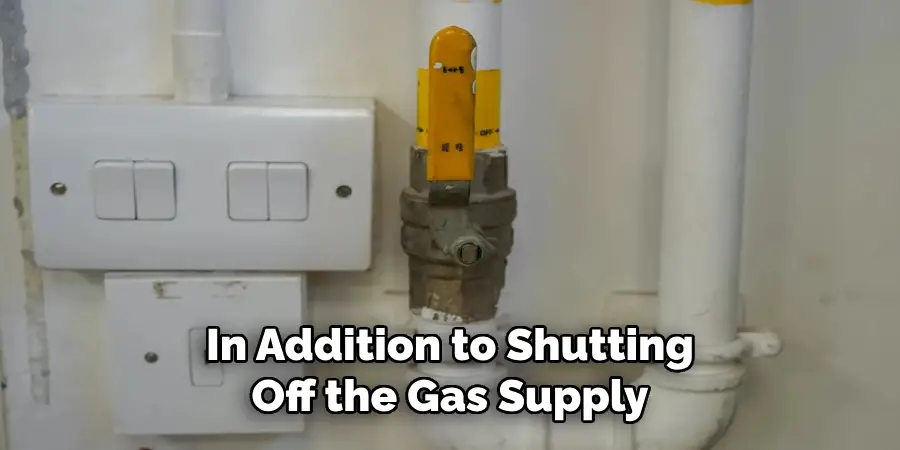
7. Check and Clean the Vents
Your furnace’s venting system plays a crucial role in maintaining safe and efficient operation. Before shutting down the furnace, inspect the vents for any blockages or obstructions. This includes both the intake and exhaust vents. Clear away any debris, such as leaves or bird nests, that may have accumulated. Cleaning the vents ensures proper airflow and prevents potential issues when the furnace is restarted. It’s also a good time to ensure that the venting system is in good condition and securely connected.
8. Cover the Furnace
Covering the furnace during the summer months can protect it from dust and debris that may accumulate while it is inactive. Use a breathable furnace cover, which you can purchase from a hardware store, to shield the furnace. Avoid using plastic covers, as they can trap moisture and cause corrosion. Covering the furnace helps maintain its cleanliness and ensures it is in optimal condition when it’s time to restart. Remember to remove the cover before turning the furnace back on in the fall.
9. Schedule a Professional Maintenance Check
Although many of the steps in shutting down your furnace can be done by a homeowner, scheduling a professional maintenance check is highly recommended. A qualified HVAC technician can perform a comprehensive inspection and cleaning of your furnace, ensuring that all components are in good working order. They can also identify and address any potential issues that may not be visible to an untrained eye. Professional maintenance provides a thorough evaluation of your furnace’s condition and ensures it is properly prepared for summer shutdown and subsequent restart.
10. Document the Shutdown Process
Documenting the shutdown process is an often-overlooked step but can be extremely beneficial. Keep a record of the steps you took to shut down your furnace, including the date and any specific actions performed. This documentation serves as a useful reference when it’s time to restart the furnace in the fall. It ensures that you don’t miss any critical steps and helps you remember the procedures involved. Additionally, keeping a log of maintenance activities, including professional inspections and repairs, provides a complete history of your furnace’s upkeep, which can be valuable for future reference or if you sell your home.

Conclusion
In conclusion, properly turning off your gas furnace for the summer is a crucial task that ensures both safety and efficiency in your home. By taking the time to follow the necessary steps—such as shutting off the pilot light, turning off the gas supply, and performing a comprehensive inspection—you not only conserve energy but also prolong the life of your furnace.
These actions help prevent potential issues that could arise from leaving the furnace idle during the warmer months. Additionally, addressing any maintenance needs during this shutdown period allows for a smoother transition back to heating when the colder weather returns. Thanks for reading, and we hope this has given you some inspiration on how to turn off gas furnace for summer!

